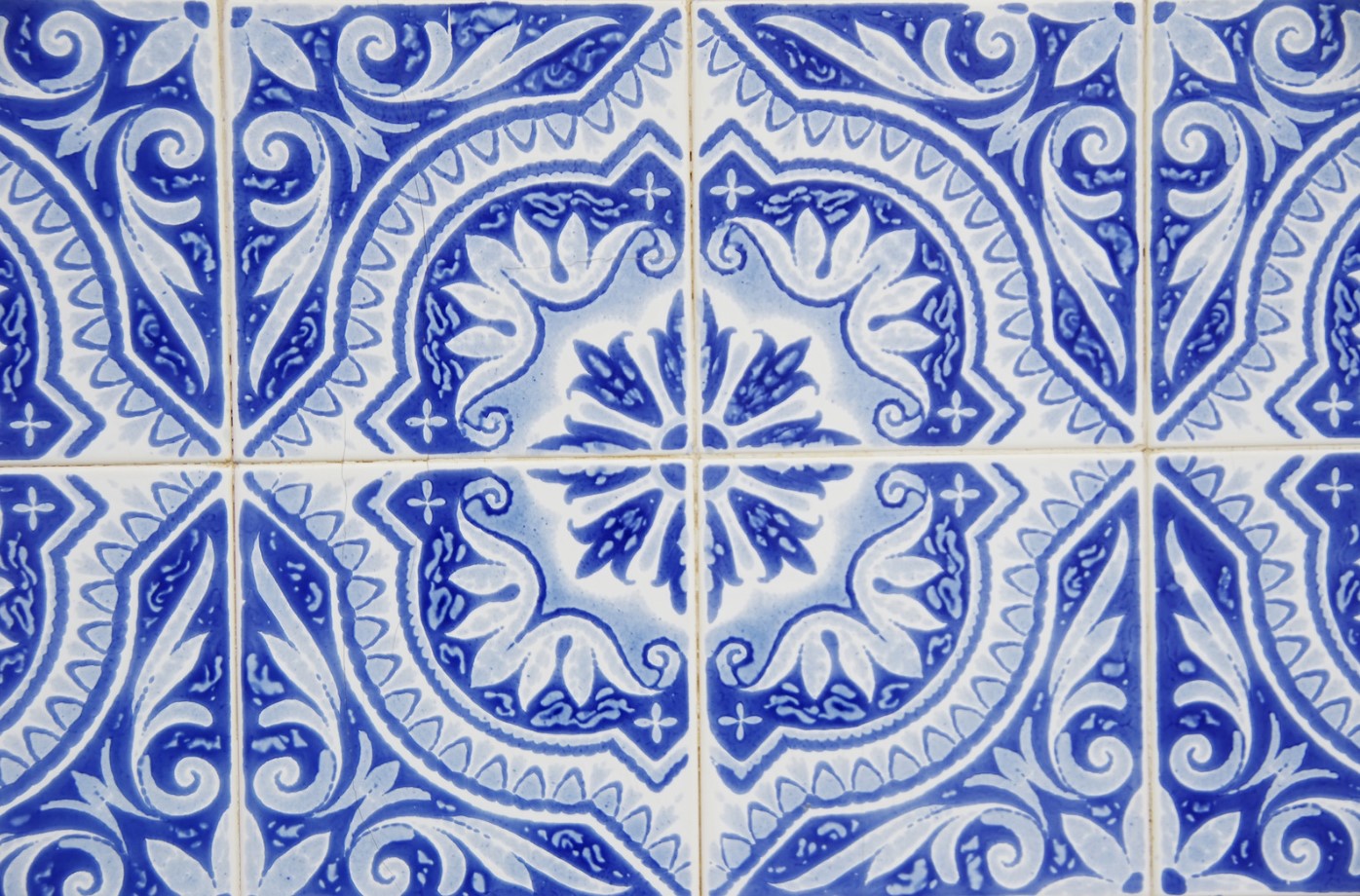
Portuguese tiles (known as azulejos) are a distinctive feature of the Lusitanian culture and architecture.
After all, they tell a rich history that goes back centuries.
These small, hand-painted ceramic pieces are true works of art that display intricate patterns and add a special touch to buildings and cityscapes in Portugal.
Do you want to know more about this important Portuguese cultural aspect?
So come with us to delve into this history, from its origins to its contemporary role in artistic expression.
We’ll explore the fascinating history of these beautiful pieces and the importance they play in the country’s culture.
The origin of Portuguese tiles dates to the period of Moorish rule when they brought this form of art from the Iberian Peninsula.
However, it was during the 15th century that tile production began to truly flourish in Portugal.
And so, they quickly became a popular form of decoration, being used in churches, palaces, private homes and even in public spaces such as train stations and building facades.
One of the most striking features of Portuguese tiles is their diversity of patterns and themes.
From complex geometric patterns to representations of historical scenes, bucolic landscapes and floral ornamentation, tiles reflect the imagination and skill of the artists who created them.
In the 17th century, tile production expanded further. Baroque and Rococo brought a new dimension to Portuguese tiles, with their exuberant ornaments and intricate details.
Large tile panels decorated the palaces and residences of the nobility, depicting scenes of courtly life and idyllic landscapes.
Each piece is carefully hand-painted, utilizing a vibrant color palette and traditional painting techniques that have been passed down from generation to generation.
In addition to their aesthetic beauty, tiles also serve a functional purpose.
Due to their insulating properties, they help regulate the interior temperature of buildings, keeping them cool in summer and protecting them from the cold in winter.
Azulejos also can resist the passage of time and adverse weather conditions, which explains why so many historic examples can still be admired across the country.
Before we get to the present day, it is interesting to know that during the 18th century, Portuguese tiles also gained popularity in public spaces.
The facades of buildings, train stations and murals in urban areas began to be decorated with these pieces.
Thus, this practice continued throughout the 19th century when tiles were used to beautify train stations along the main railway lines in Portugal.
Its production reached its peak in the 17th and 18th centuries, with hundreds of workshops and factories across the country.
The cities of Lisbon, Porto, Aveiro and Coimbra became important centers of tile production. The artists were skilled craftsmen, hand painting each piece and signing their work with pride.
Therefore, when exploring Portugal, it is impossible not to come across the magnificent tile panels that adorn the churches and building facades.
One of the most famous examples is the São Bento Railway Station, in Porto, where more than 20,000 tiles depict historical and rural scenes in the country. In Lisbon, the Church and Convent of São Vicente de Fora have an impressive collection of 18th-century tiles depicting the life of São Vicente.
Thus, the tile tradition of Portugal continues to the present day.
Many contemporary artists are reinventing this art form, combining ancient techniques with modern styles, and tackling contemporary themes.
These contemporary pieces can be found not only in historic buildings, but also in art galleries and exhibitions, demonstrating the versatility and continued relevance of this form of artistic expression.
Each tile is a testament to the artistic skill and imagination of the artists who created them. They are a living cultural legacy, passed down from generation to generation, and a way of keeping Portugal’s history and tradition alive.
Portuguese tiles also have a significant economic impact.
For the production and preservation of these pieces of art generate jobs, attract tourists, and strengthen the tourism industry and the local economy.
This process involves a network of artisans, potters, painters, and other qualified professionals. This industry generates direct and indirect jobs, offering job opportunities and contributing to the local economy.
In addition, the export of these pieces around the world contributes to the promotion of Portuguese culture and crafts.
Likewise, they generate revenue for companies and help to strengthen the image of Portugal as a center of excellence in tiles.
Finally, Portuguese tiles play a fundamental role in the culture and identity of Portugal.
Over the centuries, they have been a unique form of artistic expression, telling stories, beautifying spaces, and representing the country’s rich tradition.
Portuguese tiles are true works of art that transcend time, preserving the cultural heritage and craftsmanship of past generations.